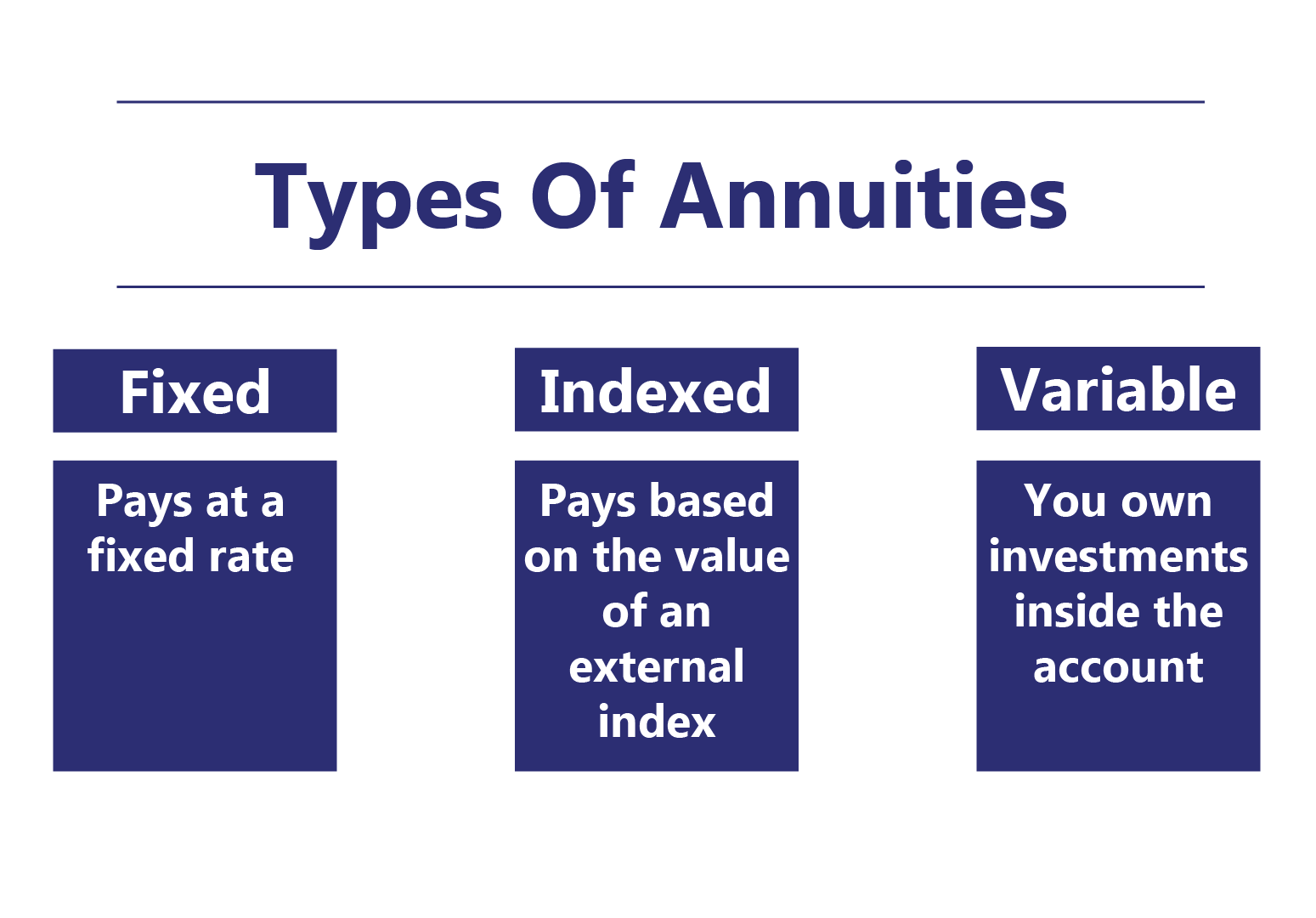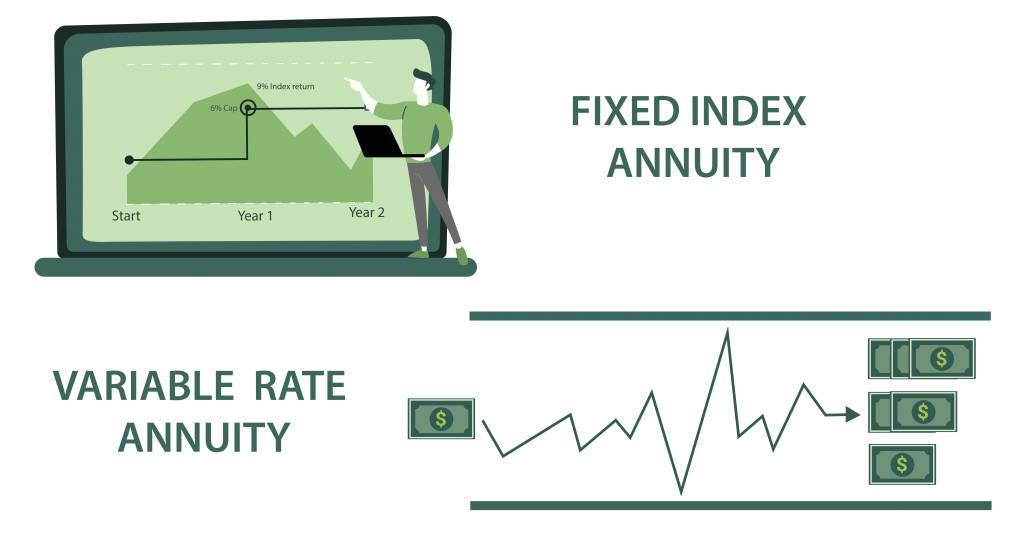All Categories
Featured
Table of Contents
The settlement could be spent for growth for a long period of timea single premium deferred annuityor spent for a brief time, after which payment beginsa solitary premium immediate annuity. Solitary premium annuities are frequently moneyed by rollovers or from the sale of an appreciated asset. An adaptable costs annuity is an annuity that is planned to be moneyed by a series of payments.
Owners of dealt with annuities recognize at the time of their purchase what the worth of the future cash circulations will certainly be that are produced by the annuity. Undoubtedly, the number of capital can not be recognized ahead of time (as this depends upon the agreement proprietor's lifespan), but the guaranteed, taken care of rates of interest at the very least provides the proprietor some level of assurance of future income from the annuity.
While this distinction appears easy and uncomplicated, it can dramatically impact the value that a contract owner ultimately acquires from his or her annuity, and it creates substantial uncertainty for the contract proprietor - Fixed annuity contracts. It also normally has a product effect on the level of charges that a contract owner pays to the providing insurer
Fixed annuities are frequently used by older capitalists who have limited assets however who wish to balance out the risk of outlasting their assets. Set annuities can offer as an efficient tool for this function, though not without certain disadvantages. In the case of immediate annuities, once a contract has been acquired, the contract owner relinquishes any and all control over the annuity properties.
Exploring the Basics of Retirement Options Key Insights on Fixed Vs Variable Annuity Pros Cons What Is Fixed Vs Variable Annuity Pros Cons? Advantages and Disadvantages of Different Retirement Plans Why Fixed Vs Variable Annuity Can Impact Your Future How to Compare Different Investment Plans: How It Works Key Differences Between Different Financial Strategies Understanding the Key Features of Long-Term Investments Who Should Consider Strategic Financial Planning? Tips for Choosing Fixed Income Annuity Vs Variable Growth Annuity FAQs About Retirement Income Fixed Vs Variable Annuity Common Mistakes to Avoid When Planning Your Retirement Financial Planning Simplified: Understanding Your Options A Beginner’s Guide to Tax Benefits Of Fixed Vs Variable Annuities A Closer Look at Fixed Annuity Vs Equity-linked Variable Annuity
As an example, a contract with a common 10-year surrender duration would certainly charge a 10% surrender fee if the contract was given up in the very first year, a 9% surrender cost in the second year, and more until the surrender fee gets to 0% in the agreement's 11th year. Some delayed annuity contracts have language that enables for tiny withdrawals to be made at numerous intervals throughout the surrender period without penalty, though these allowances usually come with a price in the kind of lower guaranteed passion prices.
Just as with a fixed annuity, the proprietor of a variable annuity pays an insurance policy firm a swelling amount or series of settlements in exchange for the promise of a collection of future repayments in return. As discussed over, while a repaired annuity expands at an ensured, continuous price, a variable annuity grows at a variable price that depends upon the efficiency of the underlying investments, called sub-accounts.
During the buildup phase, assets purchased variable annuity sub-accounts grow on a tax-deferred basis and are exhausted only when the agreement owner takes out those profits from the account. After the build-up stage comes the revenue phase. With time, variable annuity properties should theoretically boost in worth up until the contract proprietor determines he or she wish to start withdrawing cash from the account.
The most substantial problem that variable annuities generally present is high price. Variable annuities have a number of layers of costs and expenditures that can, in accumulation, develop a drag of up to 3-4% of the agreement's worth each year.
M&E cost fees are calculated as a percent of the contract value Annuity companies hand down recordkeeping and other management expenses to the contract owner. This can be in the type of a level annual charge or a portion of the agreement value. Administrative fees may be consisted of as component of the M&E risk charge or may be examined independently.
These costs can range from 0.1% for passive funds to 1.5% or more for actively taken care of funds. Annuity contracts can be personalized in a variety of ways to serve the particular needs of the agreement proprietor. Some usual variable annuity bikers consist of guaranteed minimal buildup advantage (GMAB), assured minimum withdrawal benefit (GMWB), and ensured minimal earnings advantage (GMIB).
Breaking Down Your Investment Choices A Closer Look at How Retirement Planning Works Breaking Down the Basics of Investment Plans Pros and Cons of Choosing Between Fixed Annuity And Variable Annuity Why Choosing the Right Financial Strategy Can Impact Your Future How to Compare Different Investment Plans: How It Works Key Differences Between Fixed Income Annuity Vs Variable Annuity Understanding the Rewards of Long-Term Investments Who Should Consider Strategic Financial Planning? Tips for Choosing Variable Annuity Vs Fixed Indexed Annuity FAQs About Planning Your Financial Future Common Mistakes to Avoid When Choosing Deferred Annuity Vs Variable Annuity Financial Planning Simplified: Understanding Your Options A Beginner’s Guide to Smart Investment Decisions A Closer Look at How to Build a Retirement Plan
Variable annuity payments supply no such tax obligation reduction. Variable annuities tend to be very inefficient automobiles for passing wealth to the following generation due to the fact that they do not delight in a cost-basis change when the original contract owner passes away. When the proprietor of a taxed financial investment account dies, the expense bases of the investments held in the account are adapted to reflect the market costs of those investments at the time of the proprietor's death.
Such is not the situation with variable annuities. Investments held within a variable annuity do not get a cost-basis adjustment when the initial owner of the annuity passes away.

One significant concern associated with variable annuities is the capacity for problems of interest that may feed on the part of annuity salesmen. Unlike a financial consultant, who has a fiduciary responsibility to make financial investment decisions that benefit the client, an insurance policy broker has no such fiduciary commitment. Annuity sales are very lucrative for the insurance coverage specialists who sell them since of high upfront sales payments.
Several variable annuity contracts include language which places a cap on the percentage of gain that can be experienced by specific sub-accounts. These caps avoid the annuity owner from totally participating in a portion of gains that might or else be appreciated in years in which markets produce significant returns. From an outsider's point of view, presumably that capitalists are trading a cap on investment returns for the previously mentioned guaranteed floor on financial investment returns.
Highlighting What Is Variable Annuity Vs Fixed Annuity Key Insights on Your Financial Future What Is the Best Retirement Option? Pros and Cons of Variable Annuity Vs Fixed Annuity Why Fixed Vs Variable Annuity Is a Smart Choice How to Compare Different Investment Plans: How It Works Key Differences Between Different Financial Strategies Understanding the Risks of What Is A Variable Annuity Vs A Fixed Annuity Who Should Consider Strategic Financial Planning? Tips for Choosing the Best Investment Strategy FAQs About Variable Vs Fixed Annuity Common Mistakes to Avoid When Choosing Fixed Interest Annuity Vs Variable Investment Annuity Financial Planning Simplified: Understanding Annuity Fixed Vs Variable A Beginner’s Guide to Fixed Vs Variable Annuities A Closer Look at Fixed Vs Variable Annuity Pros And Cons
As noted above, surrender fees can badly restrict an annuity owner's capacity to relocate properties out of an annuity in the very early years of the contract. Better, while the majority of variable annuities permit agreement owners to take out a specified amount throughout the buildup stage, withdrawals past this amount commonly cause a company-imposed charge.
Withdrawals made from a set rate of interest financial investment choice might also experience a "market price modification" or MVA. An MVA adjusts the value of the withdrawal to mirror any type of changes in rates of interest from the moment that the cash was bought the fixed-rate alternative to the time that it was withdrawn.

Frequently, even the salesmen who market them do not fully understand exactly how they work, and so salespeople sometimes victimize a buyer's emotions to sell variable annuities rather than the values and viability of the items themselves. Our team believe that financiers need to completely recognize what they own and just how much they are paying to possess it.
The same can not be said for variable annuity possessions held in fixed-rate financial investments. These possessions legitimately belong to the insurer and would as a result go to danger if the company were to fail. In a similar way, any warranties that the insurance provider has accepted give, such as an ensured minimal income advantage, would certainly be in question in case of a business failing.
Exploring Fixed Vs Variable Annuity Pros Cons A Comprehensive Guide to Investment Choices What Is Variable Annuity Vs Fixed Annuity? Features of Smart Investment Choices Why Choosing the Right Financial Strategy Is Worth Considering How to Compare Different Investment Plans: A Complete Overview Key Differences Between Different Financial Strategies Understanding the Rewards of Fixed Annuity Vs Variable Annuity Who Should Consider Strategic Financial Planning? Tips for Choosing the Best Investment Strategy FAQs About Indexed Annuity Vs Fixed Annuity Common Mistakes to Avoid When Planning Your Retirement Financial Planning Simplified: Understanding Your Options A Beginner’s Guide to Smart Investment Decisions A Closer Look at Fixed Annuity Vs Equity-linked Variable Annuity
Possible purchasers of variable annuities need to comprehend and think about the financial condition of the providing insurance coverage firm before getting in into an annuity agreement. While the benefits and drawbacks of different kinds of annuities can be debated, the real problem bordering annuities is that of suitability. Place merely, the question is: who should possess a variable annuity? This inquiry can be challenging to respond to, provided the myriad variations readily available in the variable annuity universe, however there are some standard standards that can help financiers determine whether annuities need to contribute in their economic plans.
After all, as the stating goes: "Customer beware!" This article is prepared by Pekin Hardy Strauss, Inc. ("Pekin Hardy," dba Pekin Hardy Strauss Wide Range Administration) for informative objectives only and is not planned as an offer or solicitation for business. The information and data in this write-up does not constitute lawful, tax obligation, audit, financial investment, or various other professional recommendations.
Table of Contents
Latest Posts
Highlighting the Key Features of Long-Term Investments Everything You Need to Know About Financial Strategies Breaking Down the Basics of Investment Plans Benefits of Choosing the Right Financial Plan
Decoding Variable Vs Fixed Annuity A Comprehensive Guide to Retirement Income Fixed Vs Variable Annuity What Is the Best Retirement Option? Benefits of Variable Annuities Vs Fixed Annuities Why What I
Decoding Annuity Fixed Vs Variable Key Insights on Your Financial Future What Is the Best Retirement Option? Features of Annuities Variable Vs Fixed Why Choosing the Right Financial Strategy Matters f
More
Latest Posts